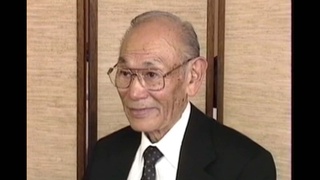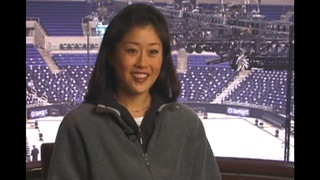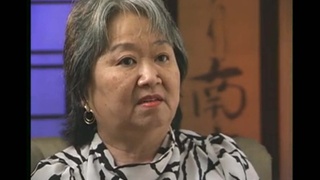Interviews
Brother leaves for war, survival
And at that time, when he came to pick up my brother, my mother never showed tears. She smiled, and she said, “You’re an American now, no matter what. Don’t bring shame on the Oyama family.” And because you grew up without a father, don’t do anything to disgrace the family. “You fight for America, because that’s where you belong.”
And then, after my brother left, I went back to the house, and then I was surprised because […] when I went back to the house, my mother had locked herself in the bedroom and she was just crying her heart out. That’s the part where I admire my mother because she really never showed her weakness because she wanted to be strong for us, growing up without a father. And I think that’s what kept us going.
We were such a close-knit family, you know. And I think that’s the only time I really heard her really cry. And I think once, as a widowed mother, single mother, it must have been tough for her, you know. And once she tried to leave us, and I think she just wanted to get over it. So, a kind neighbor next door, you know, the adults came over to stop her. But, after I got married, I realized how difficult it was during that immigrant period. You know, you’re away from your family in Japan and without relatives to learn to survive on your own.
Date: February 19, 2004
Location: Hawai'i, US
Interviewer: Lisa Itagaki, Krissy Kim
Contributed by: Watase Media Arts Center, Japanese American National Museum.
Explore More Videos

State Department records show concern for treatment of Japanese American internees
(1924-2018) Researcher, Activist

Remembering December 7, 1941
(1923-2011) Lawyer, MIS veteran, founder of Francis and Sarah Sogi Foundation

Meeting Japanese Americans from the mainland in MIS
(1923-2011) Lawyer, MIS veteran, founder of Francis and Sarah Sogi Foundation

Awareness of concentration camps as a Japanese American
(1923-2011) Lawyer, MIS veteran, founder of Francis and Sarah Sogi Foundation

Visiting family in Japan
(1923-2011) Lawyer, MIS veteran, founder of Francis and Sarah Sogi Foundation

Manhunt
(1919 - 2005) Challenged the constitutionality of Executive Order 9066.

Tracing my family crest
(b. 1967) Hawai`i-born professional fighter in Japan


The Final Verdict
(1919 - 2005) Challenged the constitutionality of Executive Order 9066.


Grandparent's unspoken past
(b.1971) Professional figure skater and Olympic gold medalist.


Search of family home by the FBI following the bombing of Pearl Harbor
(1937 - 2021) Teacher

Not recognizing father after reunion at Crystal City, Texas
(1937 - 2021) Teacher

A child's memories of activities at Crystal City, Texas
(1937 - 2021) Teacher
